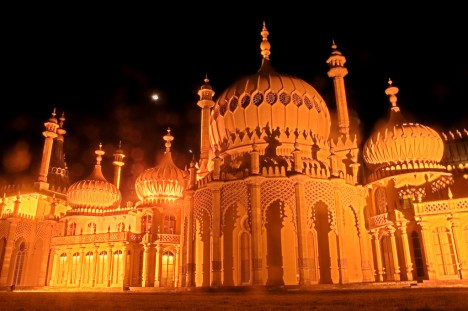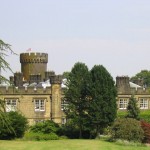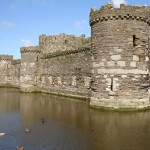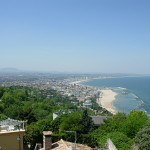Brighton’s Belle! | UK
The Prince Regent, later to become George IV, was not known for his parsimony.
His lavish spending was legendary – both before and after he succeeded to the Crown – and turned a small, innocuous village called Brighthelmstone into what today is one of the south coast’s most famous resorts.

Brighton Royal Pavilion, UK by Dominic Alves
Brighton, previously a sleepy backwater in Sussex, caught the Prince’s eye in 1783 when he paid a visit to his uncle, the Duke of Cumberland. A year later he returned and rented a farmhouse on the nearby Steine, and before long had started work on what was to become the crème de la crème of Georgian opulence.
No Expense Spared
Brighton Pavilion was a no-expense-spared, oriental masterpiece, a medley of Chinese, Indian and Turkish-inspired architecture with domes, minarets and cupolas more reminiscent of a religious temple than a British palace.
Designed by Henry Holland and later the renowned architect John Nash – with a banqueting room that alone cost more than £1/2 a million – it didn’t take long for the flighty Hanoverian to become bored with the whole scenario.
Three years before his death he abandoned Brighton, preferring to spend what was left of his short reign at Windsor Castle and Buckingham Palace.
His brother William IV, and later his successor Queen Victoria also had little affinity with the great Georgian edifice, and so Brighton Pavilion remained a very expensive and unloved monument to royal extravagance.
What Else to See
The South Downs are a walkers’ paradise…and historians too will thrill to places like Bignor Roman Villa with its unique mosaics a reminder of Britain nearly 2,000 years ago.
This is one of the largest villas ever discovered, after lying buried until being unearthed by a farmer’s plough 200 years ago.
At Brightling, an eccentric squire called John Fuller was responsible for six genuine follies that still survive today.

Prince Regent Royal Pavilion, Brighton, UK by Dominic Alves
There’s an obelisk, an observatory, a cone, a temple, round tower and pyramid…all paying homage to not only their creator’s eccentric streak, but his philanthropy as well.
‘Mad Jack’ as he was known, had a passionate interest in astronomy, but equally wanted to keep the native population in employment as the local iron industry waned.
His mausoleum is the 26-foot high pyramid in Brightling Churchyard.
More recently, the famous Bloomsbury Group of artists made Charleston Farmhouse their headquarters…and in the early years of the 1900s they descended en masse to cover every door, fireplace, bedstead and bookcase with their artwork.
This frozen-in-time country home has been preserved for modern-day visitors to enjoy, partly re-created to portray life there in the 1950s.
Nicki Williams is a copy writer for Gear-Zone, where you’ll find everything you need to explore Britain, from essential waterproof clothing to hiking boots, camping gear and travel accessories.














